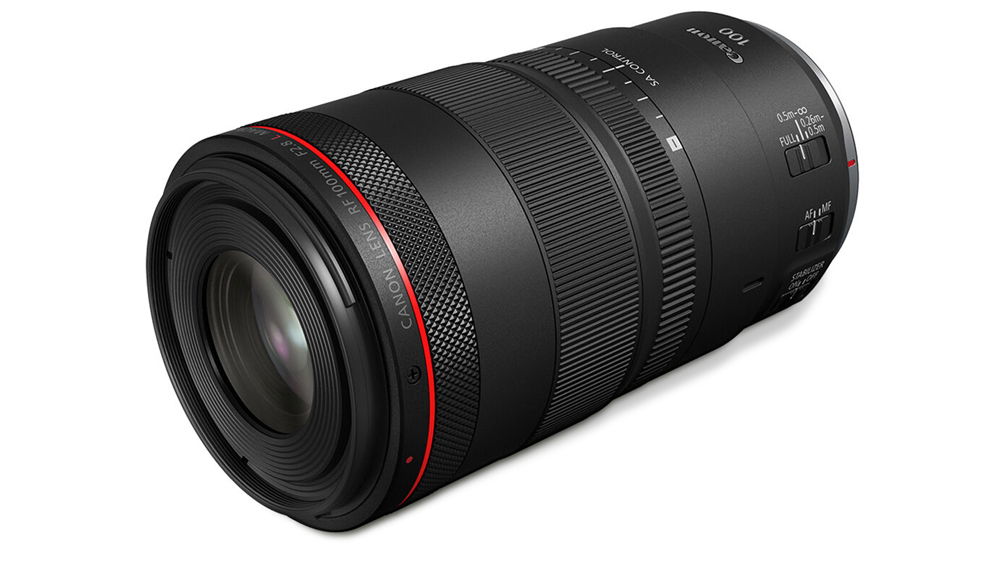Macro & Portrait Lens with Interesting Spherical Aberration Control
Review by Fernando Santos
Apart from the extra $100 on the price tag and the typical new features on RF lenses, what does the new RF 100mm F2.8L Macro lens bring to us compared to the older EF 100mm f/2.8L Macro IS USM? The first thing you’ll probably notice is the length. The RF model is significantly longer; however, after adding the EF-to-RF adapter, both end up almost at the same size. Attaching the lens hood, the total length of the RF model ends up about an inch smaller. The longer lens size probably explains the shorter focusing distance that came down from 0.99′ (0.3m) on the EF model to just 0.86′ (0.26m) on the RF version. Maximum magnification is now 1.4x instead of 1x—nice! Just in case you’re curious, the weight of the RF model including lens caps (26.8 oz/759 g) ends up being lighter than the smaller EF when you add the adapter (29.4 oz/834 g). Filter size stayed the same at 67mm.
I found the lens to be tack-sharp on my Canon R6. It’s quiet and has super-fast autofocus. Image stabilization (IS) works well too. If your camera has in-body stabilization, it will work together with the lens Hybrid IS to give you up to 8 stops of shake correction. I handheld a shot for 1.3 seconds and it came out sharp enough (probably as sharp as if it was handheld without IS at 1/200s, which is 8 stops faster). I have no complaints whatsoever regarding features and quality. As usual with Canon L-series lens, the package includes a lens pouch and the lens hood. There’s an optional tripod mount ring that I didn’t have the chance to try (at $199, not many users will probably care to get it, anyway).
The most intriguing feature on this new lens is the innovative Spherical Aberration (SA) Control Ring. Using Canon’s own words, it “allows adjustments to shape and character of foreground/background bokeh.” Here’s how it works: the lower the f/number you’re using, the more pronounced the effect will be. The effect also changes depending on the focusing distance, from non-existent at infinity focus, increasing to its maximum at 1.64′ (0.50m), and decreasing until it disappears at the 0.86′ (0.26m) minimum focusing distance. Moving the control ring toward the Plus sign softens the bokeh outlines in front of your focusing point, and enhances them behind the focusing point. Moving it toward the Minus does the opposite effect, which is probably what most people will want to achieve: a softer bokeh behind the focusing point.

If you read online forums, you’ll probably see comments by people disappointed with the SA control, mostly because it softens the whole image, not just the bokeh. Personally, I think the effect could be very interesting. It’s not something that I’d use for all images, but portrait and flower photography immediately come to mind as two kinds of photography where I could use this softer look (see example image previous page). The effect is somehow unexpected, as you can still see the image in focus but not sharp. The images have a soft, glowy, and hazy look, similar to the trendy Orton effect. Since this is a popular lens for portraits, used with the right subject, it can help you create a beautiful image. You could re-create a similar look in Photoshop but, with this lens, your image will be ready, straight out of the camera. Personally, I wouldn’t buy this lens just for the SA control, but considering all the other features, that’s an interesting add-on to have in your bag of tricks. ■






